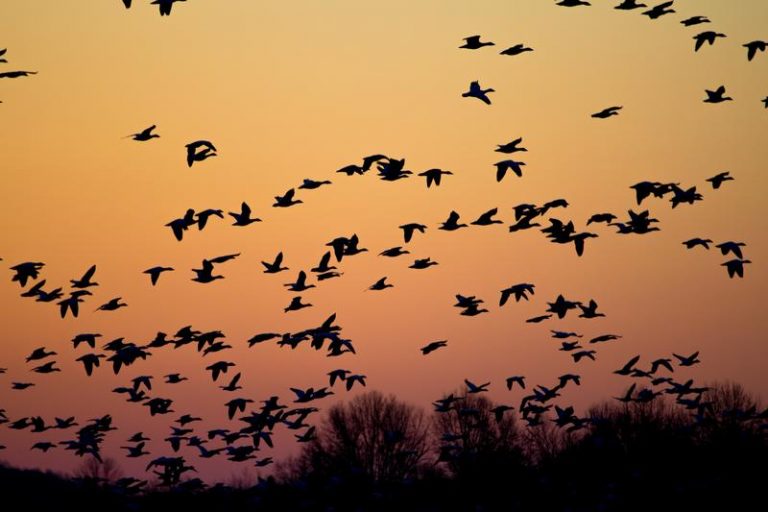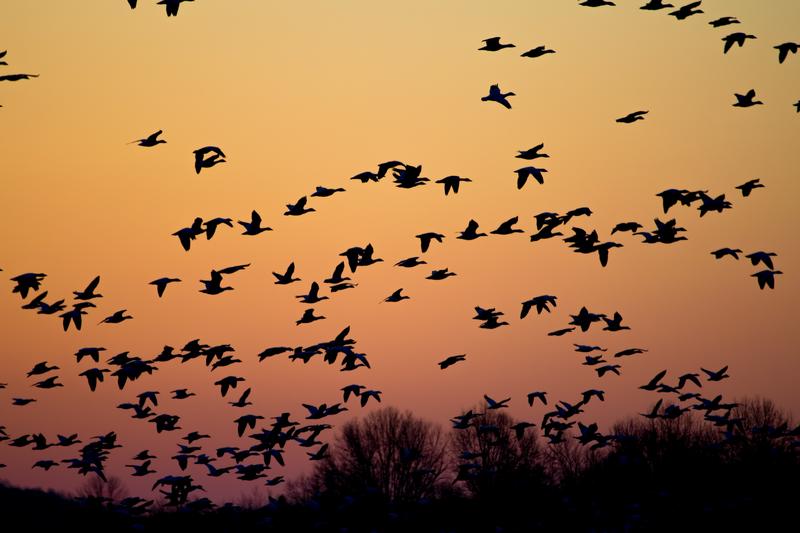
 Climate change, habitat loss, indiscriminate hunting and network towers are impacting migratory birds. These age-old travelers cross continents to maintain the ecological balance of the earth. The loss of these species will not only destabilize the biosphere but can trigger an extinction cycle across the globe.
Climate change, habitat loss, indiscriminate hunting and network towers are impacting migratory birds. These age-old travelers cross continents to maintain the ecological balance of the earth. The loss of these species will not only destabilize the biosphere but can trigger an extinction cycle across the globe.
By Nazarul Islam
Climate change, habitat loss, hunting and mobile signal towers are adversely impacting migratory birds. Forty percent of global bird species are under a direct and critical threat.
Around 1800 of the known 10,000 bird species found across the globe are migratory. The most popular long-distance migrants are the Siberian Cranes that can cover 200 miles in a single day. The medium-sized Arctic Tern has recorded the longest migration of 49,700 miles in a year from the Arctic to the Antarctic.
Hummingbirds are the smallest migratory birds weighing 1/8th of an ounce but with a speed of 48 km/hour. The Bar Headed Goose, the highest altitude migratory bird, can fly at a height of 25,000 feet while crossing the Himalayan Mountains on its journey to Tsokar Lake in Ladakh.
Birds like to migrate in order to find the best ecological conditions and habitat for breeding, feeding and raising their young. When conditions become unfavorable for them to survive, they migrate to regions where the conditions are better. Studies have shown that birds orient themselves during these long migrations by following the position of the sun and stars.
They navigate by sensing the earth’s magnetic field. Researchers have confirmed that migratory birds produce elevated concentrations of cryptochromes (Cry4) protein in their body, during migration. This protein helps the birds to sense the magnetic field of the earth.
Human-migratory bird interactions – hunting, habitat modification and deforestation – threaten the survival of these ecologically significant species. Among the major disturbances to migratory birds are network towers and their signals.
Electromagnetic radiation produced by humans, such as radio waves, can interfere with the navigational ability of bird species. These disruptions seem to have impacted the chemical reaction in the cryptochromes. This could explain why the global populations of night-migrating birds have decreased sharply in recent years.
Interference from other electronic noises disorient migratory birds, especially European robins. This problem is most acute in cities, which are buzzing with electromagnetic noise. The increasing number of cell phone towers in cities apparently affects the migration of birds to their breeding spots.
The microwaves emitted by the cell phone towers and mobile handsets have resulted in damaging bird eggs and embryos. “Tower kill” is a known phenomenon by which birds are killed by collisions with antenna towers. Night illumination around the towers can disorient the birds and propel their collision with the towers.
A recent European Information Technology Observatory report has indicated that there were 5.1 billion cell phone users worldwide by the end of 2010. The fifth generation of wireless technology, popularly known as 5G network, is responsible for our fast internet service and wireless communication. But these signal towers can seriously impact the migration of birds and can sometimes affect insects and mammals.
The ‘colony collapse disorder’ found in bees nearby to signal towers indicates the extent of damage posed by mobile towers on bees and the ecological services rendered by them. The advent of the boom in smart device technology and increasing human footprint across the globe has resulted in pushing 40% of the bird population toward extinction.
Climate change, habitat loss, indiscriminate hunting and network towers are impacting migratory birds. These age-old travelers cross continents to maintain the ecological balance of the earth, rendering major ecological services.
The loss of these species will not only destabilize the biosphere but can trigger an extinction cycle across the globe. Conservation, awareness and sustainable development are the key to safeguard these unique avian species.
Our Intuitions too, are like migratory birds, they come without a map without a reason. I am happy to know that not all species on this planet are forced to need passports and visas to experience new lands.
_____________________
About the Author
